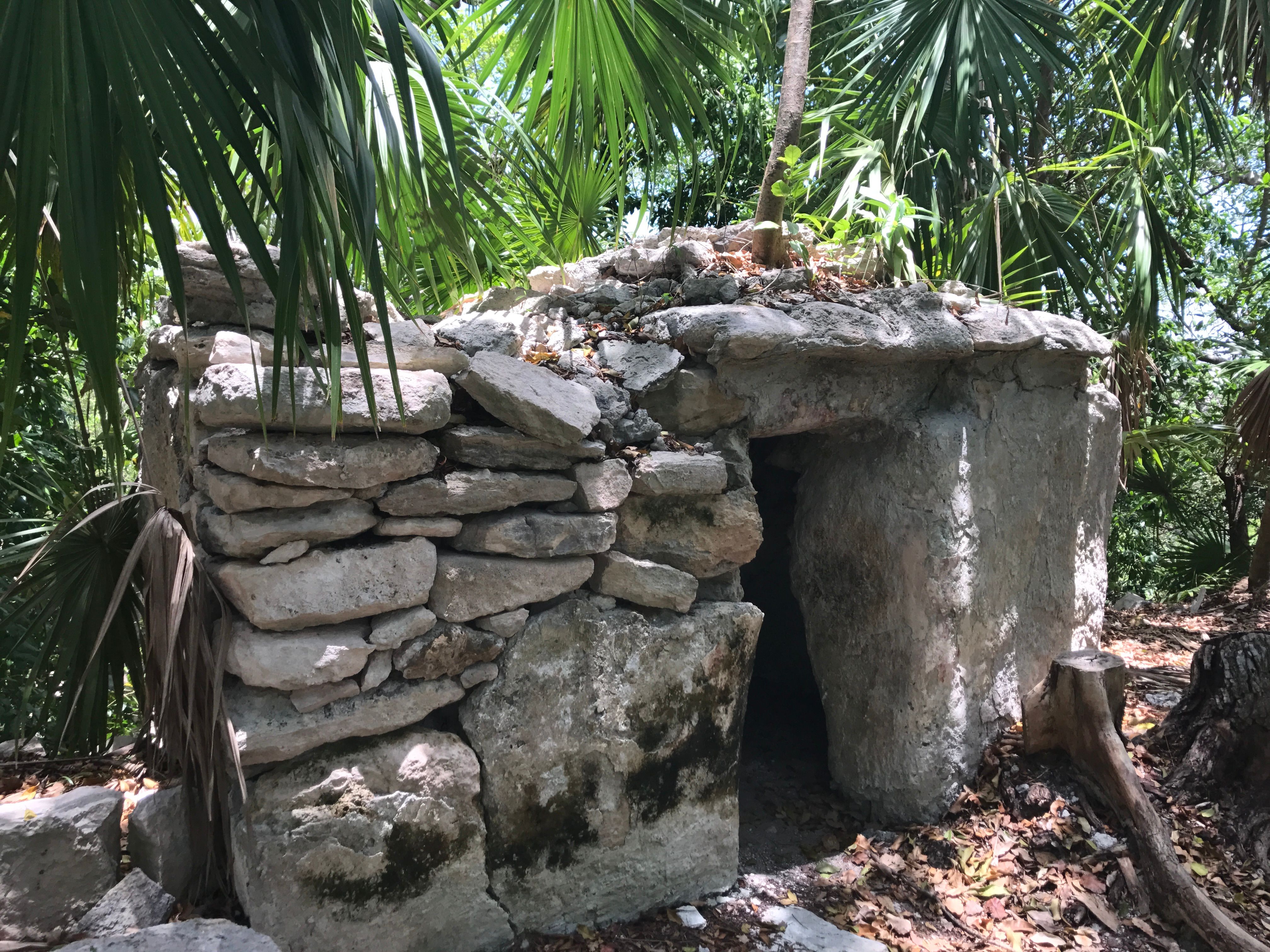
n alux (Mayan: [aˈluʃ], plural: aluxo'ob [aluʃoˀːb]) is the name given to a type of sprite or spirit in the mythological tradition of certain Maya peoples from the Yucatán Peninsula and Guatemala, also called Chanekeh or Chaneque by the Nahuatl people. Aluxo'ob are conceived of as being small, only about knee-high, and in appearance resembling miniature traditionally dressed Maya people. Tradition holds that aluxob are generally invisible but are able to assume physical form for purposes of communicating with and frightening humans as well as to congregate. They are generally associated with natural features such as forests, caves, stones, and fields but can also be enticed to move somewhere through offerings. Their description and mythological role are somewhat reminiscent of other sprite-like mythical entities in a number of other cultural traditions (such as the Celtic leprechaun), as the tricks they play are similar.[1]
Some Maya believe that the Aluxob are called into being when a farmer builds a little house on his property, most often in a maize field (milpa). For seven years, the alux will help the corn grow, summon rain and patrol the fields at night, whistling to scare off predators or crop thieves. At the end of seven years, the farmer must close the windows and doors of the little house, sealing the alux inside. If this is not done, the alux will run wild and start playing tricks on people.
Some contemporary Maya even consider the single- and double-story shrines that dot the countryside to be kahtal alux, the "houses of the alux" (although their true origins and purpose are unknown).
Stories say that they will occasionally stop and ask farmers or travellers for an offering. If they refuse, the aluxes will often wreak havoc and spread illness. However, if their conditions are met, it is thought the alux will protect a person from thieves or even bring them good luck. If they are treated with respect, they can be very helpful.
It is believed that it is not good to name them aloud, as it will summon a disgruntled alux from its home.
The word "duende" is sometimes used interchangeably with "alux". Duende is a Spanish word for a supernatural creature (commonly a goblin) or force. In fact, because of such striking similarities, some suspect that the Maya’s belief of aluxob developed through interactions with the Spanish or pirates during the 16th century. Pirates of that era were often from the British Isles, where belief in faeries was quite common, especially amongst those of lower socio-economic class (as pirates generally would have been). However, the Maya themselves would claim that the alux are the spirits of their ancestors, or the spirits of the land itself, preceding contact with Western civilization.
The supposition that aluxob featured in the mythical traditions of the pre-Columbian Maya is possibly supported by similar conceptions postulated from depictions in pre-Columbian artworks, but there is no direct evidence.
See also[edit]
Maya mythology
Wayob
Notes[edit]
Jump up ^ Montemayor, Carlos; Frischmann, Donald H. (2004). Words of the True Peoples: Anthology of Contemporary Mexican Indigenous-language Writers. University of Texas Press. p. 265. ISBN 0-292-70580-8.
References[edit]
Uc Chi, José Domingo (1996). Leyendas y Tradiciones del Camino Real (in Spanish). Campeche: Secretaría de Educación, Cultura y Deporte; Consejo Nacional de Fomento Educativo; Programa para Abatir el Rezago en Educación Básica.
Uc Colí, José Norberto (n.d.). "El duende alux "cuidador del Mayab"". Tradiciones y Leyendas (in Spanish). Calkini.net. Archived from the original on 2 April 2007. Retrieved 2007-04-03.
Hi! I am a robot. I just upvoted you! I found similar content that readers might be interested in:
https://en.wikipedia.org/wiki/Alux
Downvoting a post can decrease pending rewards and make it less visible. Common reasons:
Submit